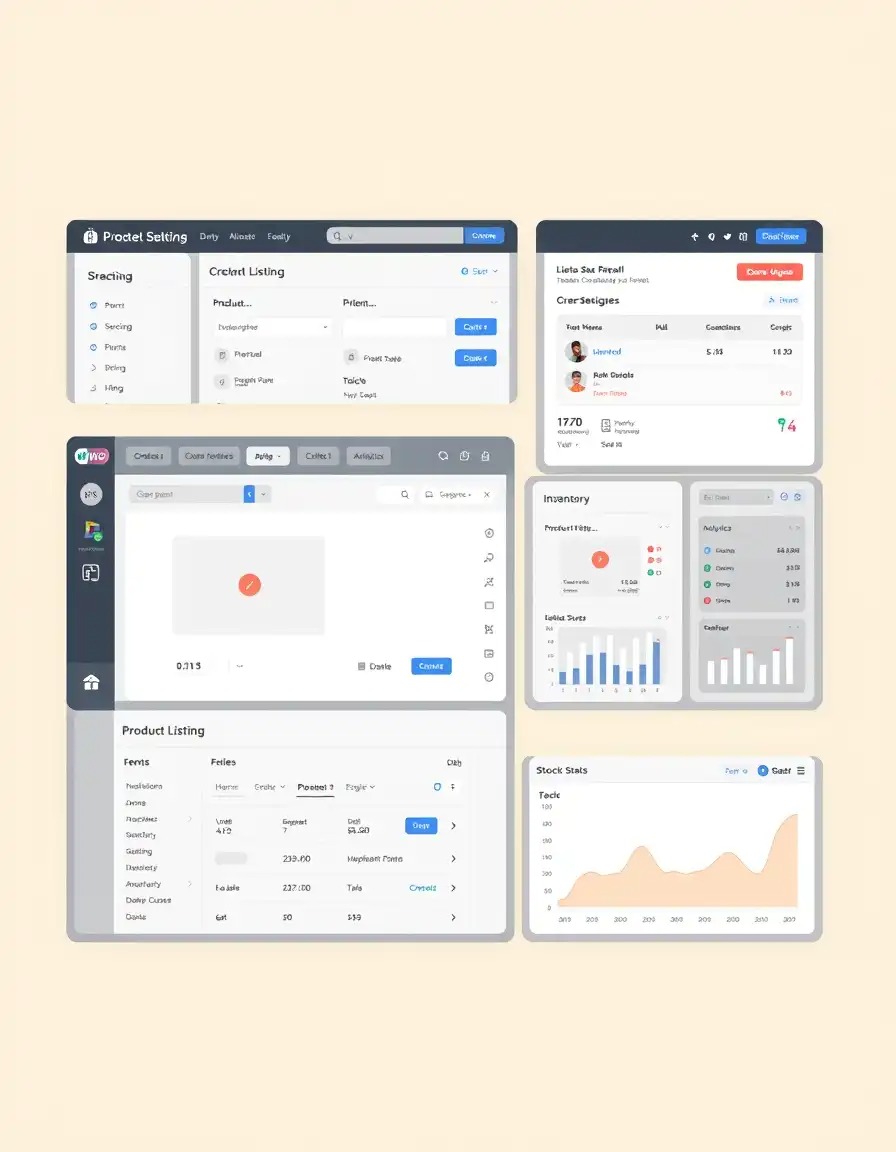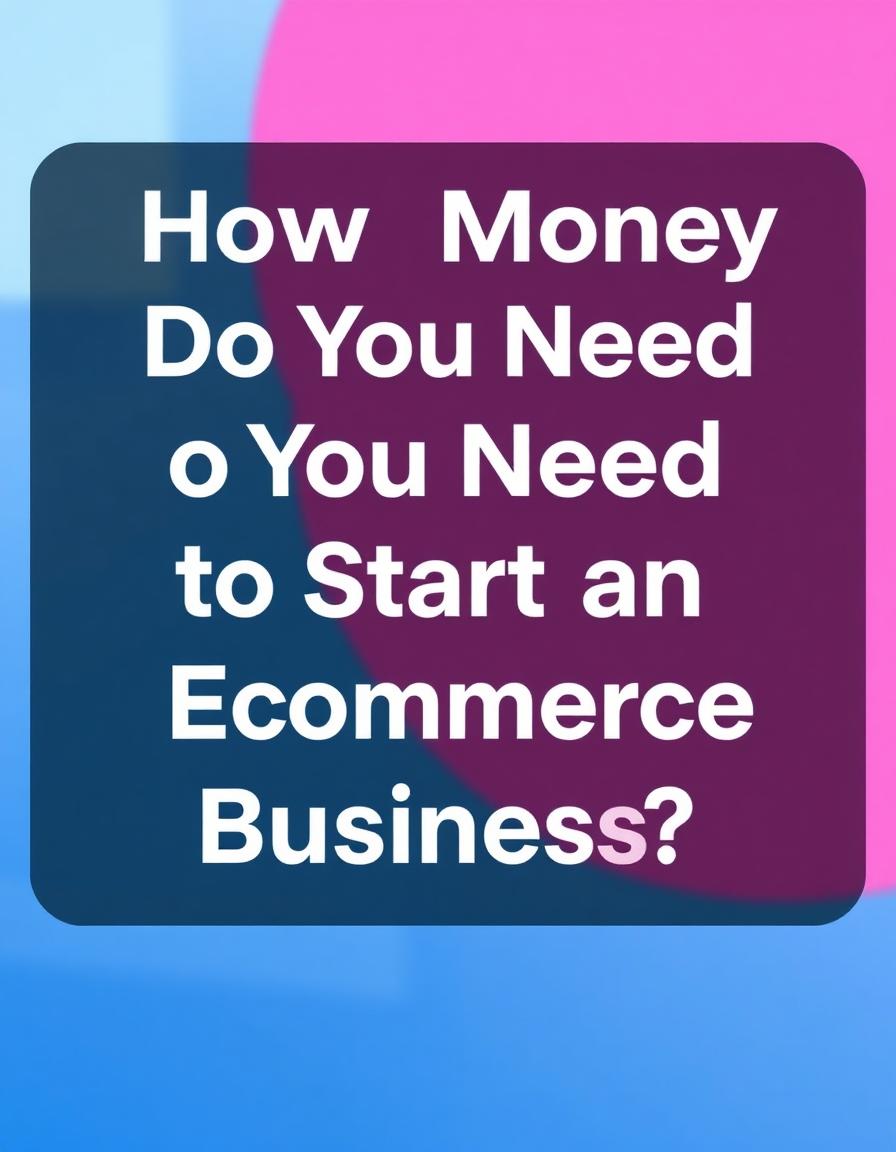How to Start an Ecommerce Business in 2025


In 2025, the ecommerce industry continues to thrive as more consumers prefer the convenience of shopping online. Starting an ecommerce business may not require a physical store, but it demands the right mindset, planning, and tools to be successful. If you’ve been dreaming about launching your own online store, this guide will walk you through everything you need to know before you begin.
What is an Ecommerce Business?

An ecommerce business is a digital storefront that allows people to buy and sell goods or services online without needing a physical shop. With increasing smartphone usage and widespread internet availability, ecommerce has become a great way to start a business with relatively low overhead.
However, it’s not as simple as it sounds. It requires planning, legal setup, platform choice, branding, marketing, and continuous learning. While there is high potential for profit, it demands commitment and consistency.
How Much Money Do You Need to Start an Ecommerce Business?

Starting an ecommerce business in India in 2025 can cost anywhere between ₹30,000 to ₹1,50,000, depending on how basic or advanced your setup is. Here’s a breakdown of common costs:
Expense | Estimated Cost |
Company Registration | ₹2,000 |
Trademark | ₹4,000 |
PAN Cards (Personal + Business) | ₹220 |
Current Account Setup | ₹25,000 – ₹30,000 |
Website Design & Development | ₹10,000 – ₹50,000+ |
Domain & Hosting | ₹2,000 – ₹5,000 annually |
Payment Gateway Setup | May be free or up to ₹5,000 |
Marketing (initial budget) | ₹5,000 – ₹30,000 |
The overall cost depends on the size and scale of your business. If you’re testing your idea in a single city or with limited stock, your initial losses (if any) will be smaller too. But never underestimate marketing and branding—these are key to long-term growth.
Setting Up Your Online Store
Here are the essential steps to get your online store live and functioning:
- Domain Name
Choose a domain name that reflects your brand, is easy to remember, and ideally includes a keyword related to your niche. For example, if you’re selling handmade soaps, “GlowSoapStore.com” might work.
Tip: Use tools like GoDaddy or Namecheap to register your domain.
- Choose an Ecommerce Platform
Platforms like Shopify, WooCommerce, Wix, or Magento let you build your store with minimal coding. Your choice will depend on your budget, technical skill, and the features you need.
Image Tip: Insert comparison chart of top ecommerce platforms.
- Design the Website
Your store’s design should be clean, easy to navigate, and responsive (mobile-friendly). A cluttered layout can reduce trust and conversions. Use professional photos and consistent colors that reflect your brand identity.
- Payment Gateway Integration
To accept payments, integrate gateways like Razorpay, PayU, or Stripe. Ensure they support UPI, cards, wallets, and net banking.
- Branding
Develop a strong identity. This includes:
- A unique logo
- Brand colors and fonts
- A consistent tone of voice across content
Bonus Tip: Use tools like Canva for DIY branding if you’re on a budget.
- Business Registration
Register your business to make it legal and eligible for taxation benefits. Consider registering as a proprietorship, partnership, or private limited company, depending on your plans.
- Inventory & Order Management
Use inventory tools like Zoho Inventory, Unicommerce, or your ecommerce platform’s dashboard to:
- Track stock
- Manage returns
- Automate shipping labels
Is Ecommerce Profitable in 2025?
Yes, ecommerce is still highly profitable in 2025—if you do it right. The key lies in selecting the right niche, offering competitive pricing, ensuring fast delivery, and marketing effectively.
Small business owners can use ecommerce to reach beyond local boundaries. For example, a bakery in Pune can sell cookies nationwide with proper packaging and delivery partners.
Profitable Niches in 2025:
- Smart home gadgets
- Kids’ learning toys
- Organic and herbal products
- Customized fashion & jewelry
- Fitness accessories
- Pet supplies
Tip: Use keyword tools like Ubersuggest or Google Trends to validate product demand.
Before buying or creating any product, make sure there’s demand. Research your target customers, competitors, and market trends.
Ask questions like:
- What problem does my product solve?
- Is there enough market demand?
- Who are my competitors?
Tip: Tools like Google Trends, Amazon Bestsellers, and keyword planners are helpful here.
Source products from reliable suppliers or manufacturers. You can look on:
- IndiaMART
- Alibaba
- TradeIndia
- Local wholesale markets
Always check reviews, get samples, and clarify return policies.
As discussed earlier, choose your platform and create your store. Ensure:
- Product pages have high-quality images and detailed descriptions.
- SEO best practices are followed (meta tags, headers, product keywords).
Image Tip: Insert a sample product page with image and description.Accordion Content
Make sure every product is listed with:
- Title with keyword
- Description highlighting benefits
- Price and offer details
- Delivery & return info
High-resolution images (400px x 400px or larger)
You can’t rely on organic traffic in the beginning. Invest in:
- Facebook & Instagram Ads
- Google Shopping Ads
- Influencer Marketing
- Email Marketing for follow-ups and discounts
Tip: Set a small ad budget initially (₹500–₹1,000/day) and monitor performance closely.
As mentioned earlier, make your business legal to avoid penalties and gain customer trust. Choose your business structure, get GST, PAN, and open a current account.
Without a seamless payment process, you’ll lose customers. Make sure your payment gateway is:
- Secure (SSL certificate enabled)
- Supports multiple payment methods
- Fast in processing refunds
Popular choices include:
- Razorpay
- Paytm Business
- Instamojo
- Stripe
Absolutely. You don’t need to start big. Start with:
- A niche product
- A few SKUs (products)
- A one-city delivery model
- Small social media marketing
As you gain sales, reviews, and feedback—you can expand slowly and smartly.
- Add high-quality images for each product you sell.
- Use ALT text for SEO and accessibility.
- Insert product links in blog posts or social media for direct shopping.
- Avoid using stock photos—real product images create trust.
Starting an ecommerce business in 2025 is a smart move—but only if you treat it like a real business. It requires investment, strategy, and patience. Follow the steps above, validate your niche, build your store smartly, and invest wisely in marketing. Whether you’re a student, homemaker, or working professional, ecommerce opens doors to financial independence.So, are you ready to start your digital journey?
